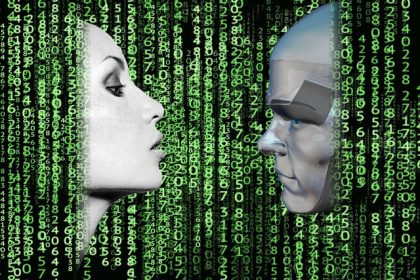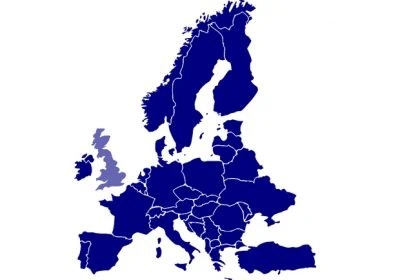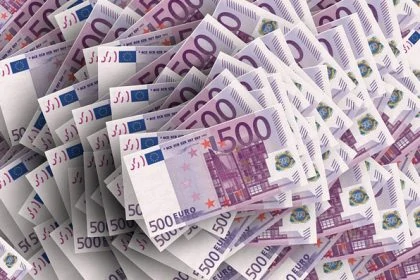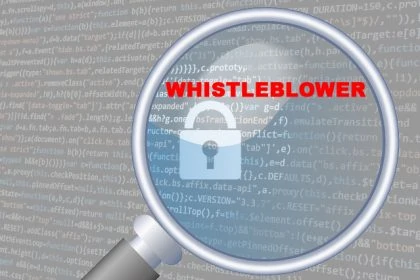Digitisation of industry in Europe is an ongoing topic. But AI inventions and NET/AI-related innovations are less loudly talked about. But in fact, 2021 is the year of change for AI innovation in Europe, with interesting decisions for the industry.

NET (new emerging technologies) and AI (artificial intelligence) and, of course, machine learning (better known as Deep Learning (DL)) have long since found their way into industry: robots as well as lawn mowers, vehicle control systems, image capture and analysis, 3D printing, construction machinery and industrial production lines. AI is also omnipresent in other areas: customs use AI as do patent offices, and even in the field of art there have been sensational successes with AI, such as the painting “Edmond de Belamy” and Beethoven’s 10th symphony. And the question of whether an AI cannot also be the rightful inventor has long been before the patent offices and courts (the highest UK court ruled on this in September 2020), the famous Debus case. All previous decisions determined that an AI cannot be an inventor because an AI is not a legal entity. At the end of 2021, a decision on this is expected from the next European instance, the Board of Appeal of the EPO.
It is all the more welcome that there has also been movement with regard to the legal and political framework conditions for AI inventions and AI innovations. In this context, 2021 is a year of change for AI innovation in Europe.
AI Innovation in Europe: Framework of EU Commission
After the first coordinated plan for AI was published by the EU Commission in December 2018 as a joint commitment with the Member States, the EU Commission is now very close to a binding legal framework for AI innovation in Europe: in April 2021, the EU Commission issued a declaration with the clear goal of making Europe the global centre for trustworthy artificial intelligence (AI). This is by no means just a declaration of intent, but a mandate to the European Parliament and member states to adopt the Commission’s proposals for a European approach to AI through the ordinary legislative process. De facto, the proposed AI concept and the proposed EU Machinery Regulation are expected to be applicable 30 months after their entry into force, i.e. in November/December 2023.
Particularly interesting in these concrete proposals is, on the one hand, the emphasis on sustainable production and also on health and mobility as sectors for which a strategic leadership role for AI innovation is to be achieved. Equally interesting and more important for industry is the decision to establish a new EU Machinery Regulation instead of the currently applicable Machinery Directive 2006/42/EC. There are important innovations in the draft of the future regulation on machinery (Proposal for a Regulation of the European Parliament and of the Council on machinery products): The revised Machinery Directive will be aligned with the New Legislative Framework (NLF, 768/2008/EC) and become an EU Regulation. The changes and extensions mainly concern conformity assessment, market surveillance and a risk assessment of new technologies and AI.
Patent law framework for AI innovation in Europe
In principle, the patentability of algorithms and software has long been considered difficult or even impossible in European patent law. Computer-implemented inventions are patentable – but programs for computers, source code or an algorithm as such are not (according to Article 52 of the European Patent Convention (EPC)).
But 2021 there is a lot of movement in this: the Enlarged Board of Appeal of the EPO (the highest judicial instance under the European Patent Convention (EPC)) remarkably decided in March 2021 (G 0001/19) on mixed inventions involving computer programs. Accordingly, as soon as a computer program is running, even merely “potential” technical effects are always to be treated as genuine technical effects. In practice, this opens up better patent protection for algorithms and mathematical models.
IP5 offices and AI patentability
Assessing the patentability of AI innovation is not only a concern for the European legal system, but also for other major patent offices and patent courts. Increasingly, cooperation is being sought in this area of NET/AI-related innovation: for example, close cooperation between the EPO and China has been ongoing since 2019. And most recently, there is also a new interdisciplinary IP5 task force, in which all IP5 partner offices and WIPO are represented. The term “IP5” refers to the five largest IP offices in the world (the EPO, the JPO, the KIPO, the CNIPA and the USPTO), which receive 80% of all patents worldwide.
In joint coordination, legal, technical and strategic aspects related to new technologies and AI and the patent system are to be expanded and harmonised as far as possible. The task force aims to develop a comprehensive roadmap that will guide the IP5 offices.
Filing a patent application for an AI invention: practical tips
Whatever global agreement will be reached on the patent application of an AI innovation, we are happy to provide some practical tips for AI innovation in Europe and European patent applications here.
The patent claim (also for an algorithm or mathematical model) can be given technical character by the technical application; however, the stated technical purpose must be “specific”. This limits the patent claim, but also offers creative leeway; perhaps the specific technical purpose can be fanned out in several levels? Of course, it would have to be demonstrated in each case how a technical problem is solved.
Experimental data are all the more important, especially in connection with patent applications of AI innovation and the question of plausibility as well as inventive step.
The EPO itself points out that an invention can be patentable that is directed to a specific technical implementation of AI and cites as an example the specific technical implementation of neural networks using graphics processing units (GPUs) or also features that lead to parallelism in processing. The invention would thus be directed to a specific technical implementation of AI, namely through technical considerations of the internal functioning of a computer.
Do you need support for your patent rights?
Do you have questions about the patentability of program code, software, AI or industrial robots? Do you need support with your patent application or would you like to defend your IP right before offices or courts?
We consider each case individually and carefully. Please feel free to contact us if you are interested.
Sources:
Press release of EU commission: Europe fit for the Digital Age, April 2021
ADT Zielke Blog: EU-Maschinenverordnung statt Maschinenrichtlinie
Image:
Tumisu | pixabay | CCO License








Leave a Reply